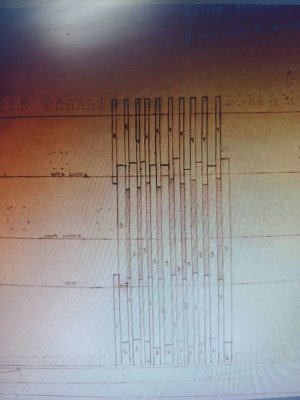- Joined
- Sep 19, 2019
- Messages
- 12
- Points
- 48

 |
As a way to introduce our brass coins to the community, we will raffle off a free coin during the month of August. Follow link ABOVE for instructions for entering. |
 |








It could be that the specific pattern of timbers for Prins Willem is lost to history, and the standard Dutch method for framing is a best guess, and all we have to go on. We OFTEN have to make assumptions in model building when a lack of information presents itself, and it the nature of model building of much older vessels from the 17th century can only be an interpretation based on what limited information is available. In other words, you have no choice but to make guesses when creating features in your model if it is pre-1800. It is not comfortable, but one has to deal with that.What I can't understand...is why the book shows the classic method of Dutch shipbuilding and not the specific method used to build the Prins Willem? This is supposed to be a book about this ship only, not a general investigation of Dutch ships.

No model we build after 400 years will be completely accurate. Don't make perfect the enemy of the good. Even the most accurate museum models are interpretation based on best knowledge available. Your model will be considered historic and authentic if you gather as much information as you can regarding the vessel's construction, use good judgement in filling in the gaps, and build a detailed model. The models that do not take advantage of available information and make huge simplifications and shortcuts in design features are the ones you can compare to toys.Hello,I contacted the rijsmuseum and it seems they also have no information about the method used to build the Prins Willem.. But a professor told me that there were more than two traditional Dutch construction methods that used to built the ships, so you are right that the information about the ship has really been lost. The question is if I build a model of the ship according to the method we know, will it be an authentic and historical model? Or a completely unhistorical imitation that is just for beauty...




What sort of changes would a floating model require? Is there some sort of shape change required to compensate for a property of scale, such as water density or surface tension?One addition to this. The model of the Prins Willem of which the drawings are made is most probably not an original underwater hull shape as the model was build as a pond ship, which means an actual floating model. Therfore the models hull shape could have been modified to fit its purpose as a floating model.
Secondly I don't know if the original Prins Willem being build as shell first as she was a ship build for the VOC chamber of Middelburg in Zeeland which is in the southern part of the Netherlands where they used a more frame first approach.
Maybe @Ab Hoving can shed more light on this.
